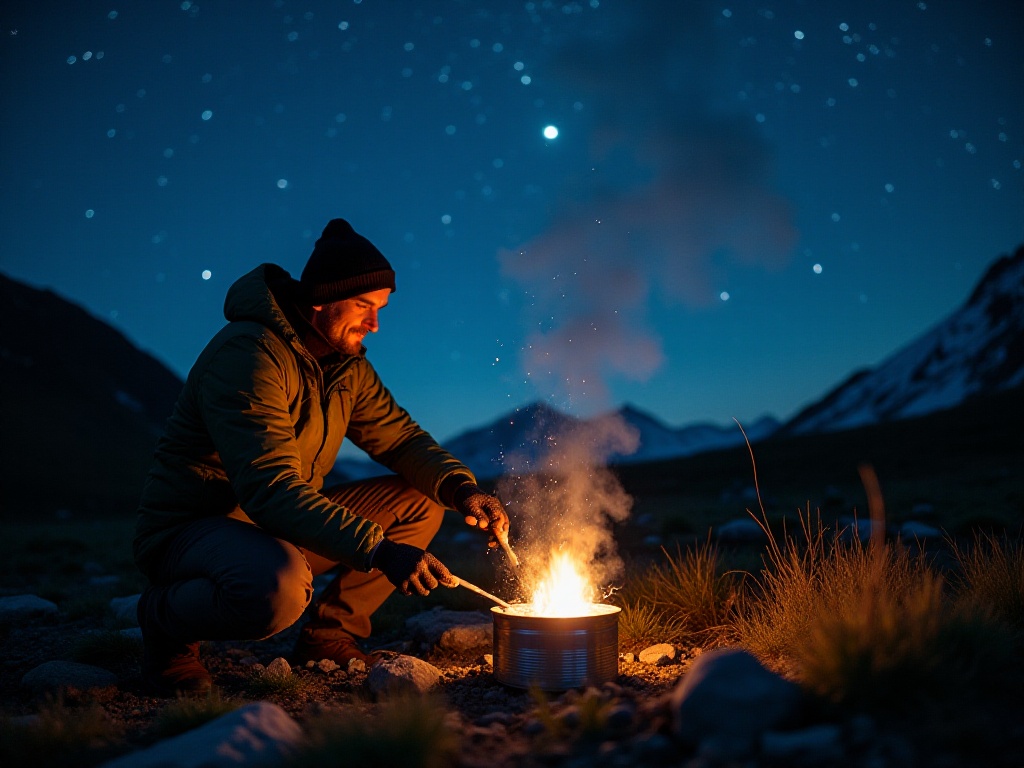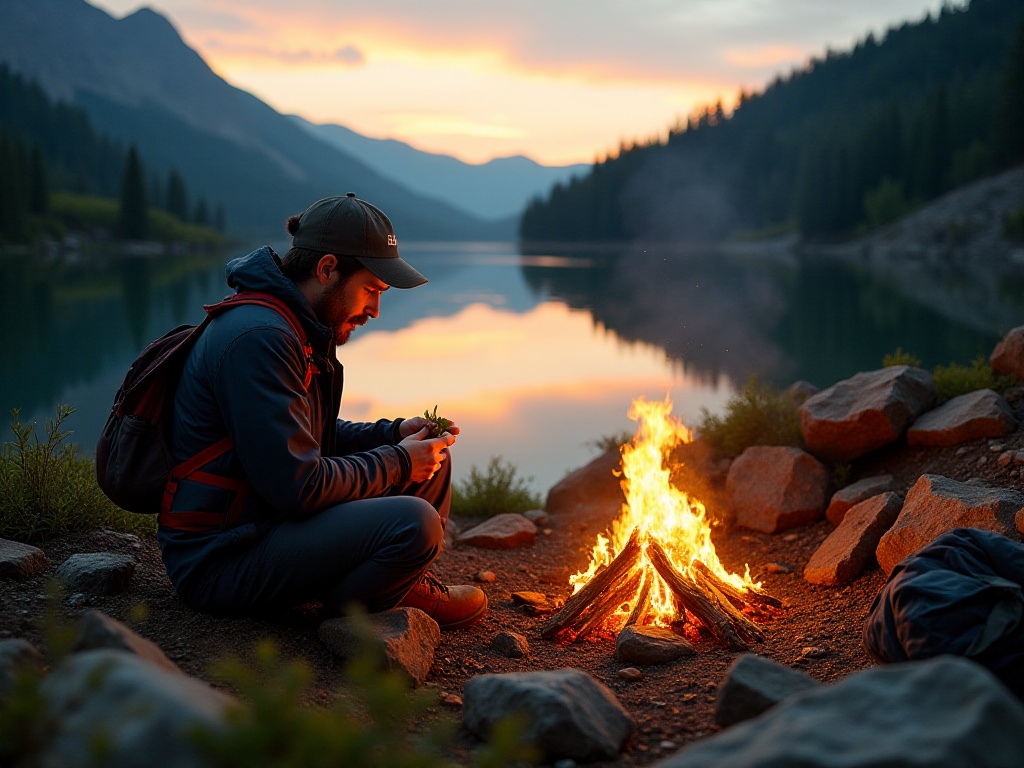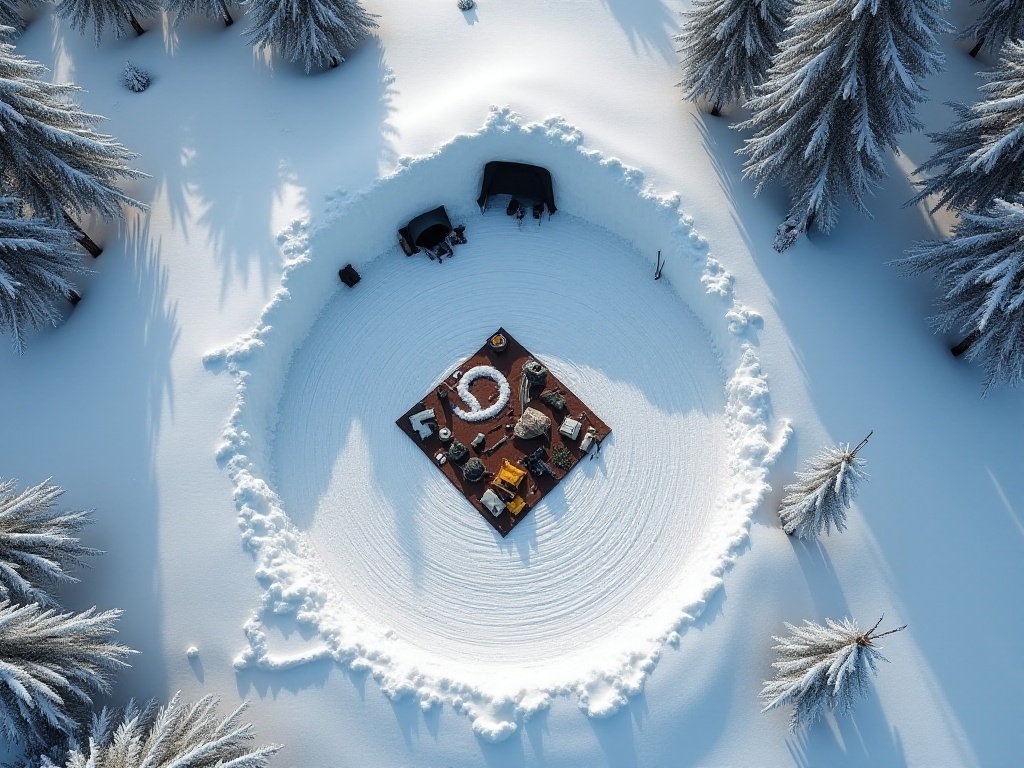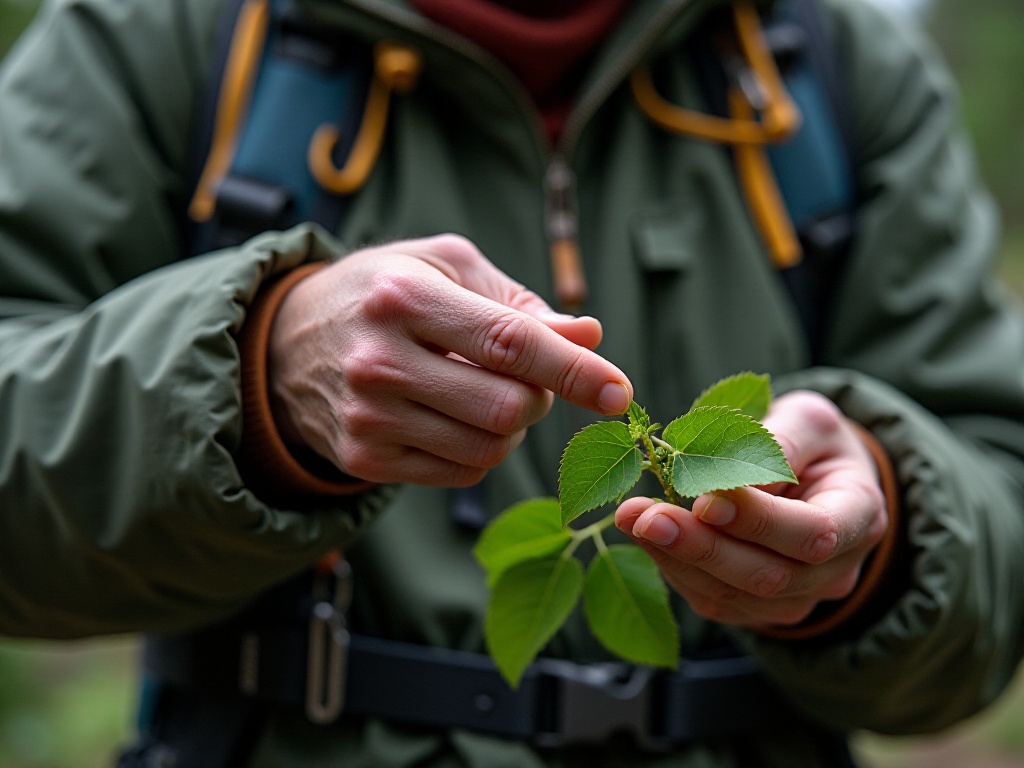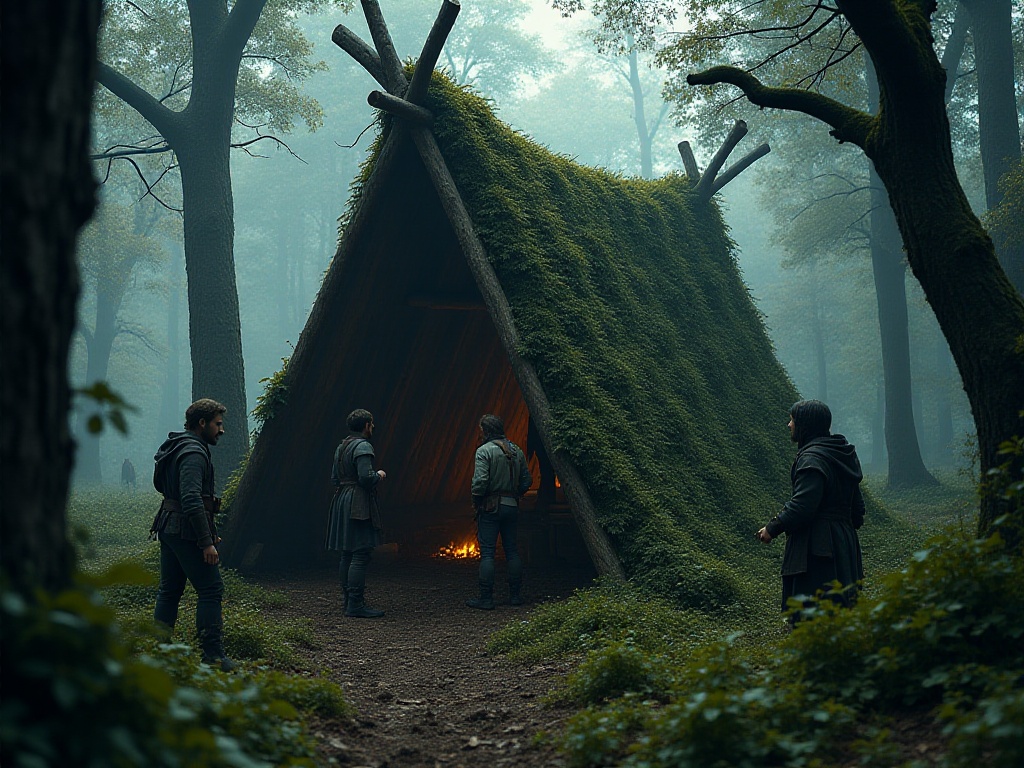Preface
Recently my social media feed has been flooded with camping photos - star-lit tents, outdoor cuisine, camping gear - it's enough to make anyone drool with envy! But whenever I think about going camping myself, I worry about various issues: How do I set up a tent? What if I encounter wild animals? What if I get lost? As someone who frequently guides newcomers, today I'll share some incredibly practical outdoor survival skills that will guarantee you'll master the outdoors!
Pre-trip Preparation
When it comes to preparation, there have been many hard lessons learned. I remember my first solo camping trip - I was so focused on bringing the big items like the tent and sleeping bag that I forgot even basic mosquito repellent. That night I was covered in mosquito bites - it was absolutely miserable! Since then, I've made it an iron rule: always complete all preparations before departure.
First and most importantly, let your friends and family know your specific itinerary. This is no joke - I know many young people think it's troublesome, but it really is a matter of life and death. Last summer, I encountered a particularly scary case. A friend who loved solo hiking would often take off without notice. One time in a remote mountain area, he lost his way with no cell signal and wandered around the mountains for two days. If he hadn't been accidentally discovered by mountain patrol workers, the consequences would have been unthinkable. So, you must share detailed itinerary information with family or friends, including where you're going, when you expect to return, where you'll park, and if possible, even share your route map with them.
Speaking of equipment, that's a whole science in itself. Many beginners think camping just means setting up a tent and bringing some food, but there's actually so much more to prepare. I've put together a super practical equipment list - these items may seem simple, but each one has been tested by countless outdoor enthusiasts:
First is the most basic - drinking water. This really can't be skimped on, and you must bring extra. My suggestion is to prepare 1.5 times your normal drinking amount because physical activity outdoors can easily lead to dehydration. Trail food is also essential - choose high-energy foods that store well.
Flashlights are absolutely camping essentials, and it's best to bring two just in case. There are many USB rechargeable flashlights on the market now with excellent battery life - highly recommended. A first aid kit is also essential, containing bandages, gauze, disinfectant, pain medication, and other basic medical supplies.
Multi-tools are truly the king of camping essentials. I've used many types and found that Swiss Army knives offer the best value. They not only have various blades but also bottle openers, screwdrivers, and other tools that can really come in handy when needed.
Emergency blankets might be unfamiliar to many, but they're truly lifesaving tools. They're lightweight and compact but provide excellent insulation. In extreme weather or emergency situations, emergency blankets can effectively prevent heat loss.
Whistles and water purification straws are two items many beginners might think unnecessary, but they're essential for emergencies. Especially when camping in remote areas, if you encounter an emergency, whistle signals can travel far. Water purification straws allow you to safely drink from streams or lakes when water is scarce.
Finally, I want to emphasize duct tape. Many might wonder why bring duct tape? But trust me, duct tape is absolutely the ultimate survival tool in the wilderness. Its uses are endless: repairing torn tents, temporarily fixing broken backpacks, emergency repairs for leaking water bottles, and even preventing blisters. To save space, I always wrap duct tape around my water bottle to carry it - this way it doesn't take up extra space and is always available.
Beyond this basic equipment, you'll need to prepare special gear based on different seasons and locations. For summer camping, insect protection equipment is particularly important; for winter camping, you need to pay special attention to warm gear. In short, it's better to over-prepare than to find yourself short of supplies in the wilderness.
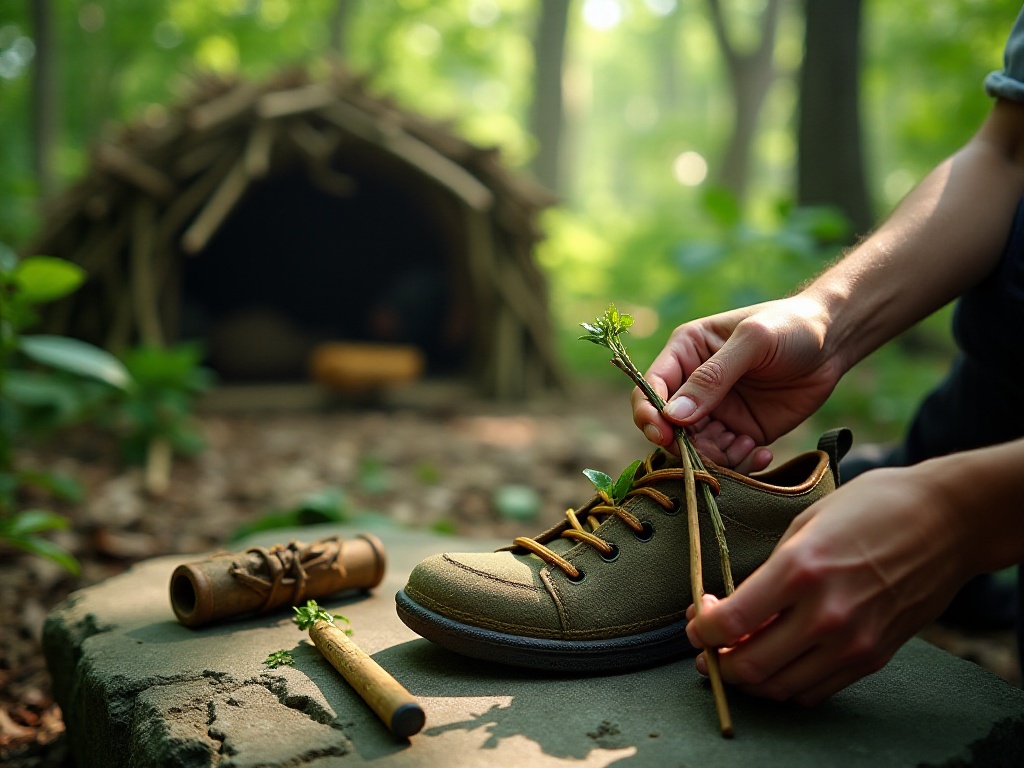
Mental Preparation
Speaking of mental preparation, this is perhaps the most easily overlooked aspect by beginners. But I can say with certainty that in the wilderness, a good mindset is more important than any equipment. I've seen too many people panic at the slightest unexpected situation outdoors, often making simple problems more complicated.
Last summer, while camping in a mountainous area, I suddenly encountered heavy fog. Visibility was less than five meters, everything was white, and I completely lost my sense of direction. In the past, I might have panicked and run around trying to find a way out. But after many outdoor experiences, I knew that staying calm was most important in such situations.
I immediately stopped where I was and found a relatively safe place to sit down. I drank water to maintain energy while waiting for the weather to improve. Honestly, the hardest part in such situations is the psychological torment. You can't help but think: Are there wild animals? Can I get out before dark? But especially at times like these, you have to tell yourself: panic won't solve anything.
After nearly two hours, the fog finally cleared. Although it caused quite a delay, because I stayed calm, I ultimately completed the journey safely. This experience taught me deeply that in the wilderness, a calm mind is more important than anything else.
Besides staying calm, environmental awareness is also an especially important mental aspect. Many popular camping sites have become unrecognizable due to visitors carelessly discarding trash, which is really heartbreaking. As outdoor enthusiasts, we must establish the concept of "Leave No Trace."
"Leave No Trace" means minimizing our outdoor activities' impact on the natural environment. Specifically, this means: taking out all trash you bring in, not burying or carelessly discarding it; not arbitrarily cutting trees or damaging vegetation; not disturbing wildlife's normal life; and using environmentally friendly equipment and items whenever possible.
I remember once at a famous camping site, seeing the entire grassland covered in barbecue charcoal and various trash. That feeling was really terrible, like watching your own home being trashed. Since then, every time I camp, I not only take away my own trash but also pick up some trash left by others. Although it might be a bit troublesome, thinking about contributing to environmental protection makes this little effort worthwhile.
Wilderness Survival Skills
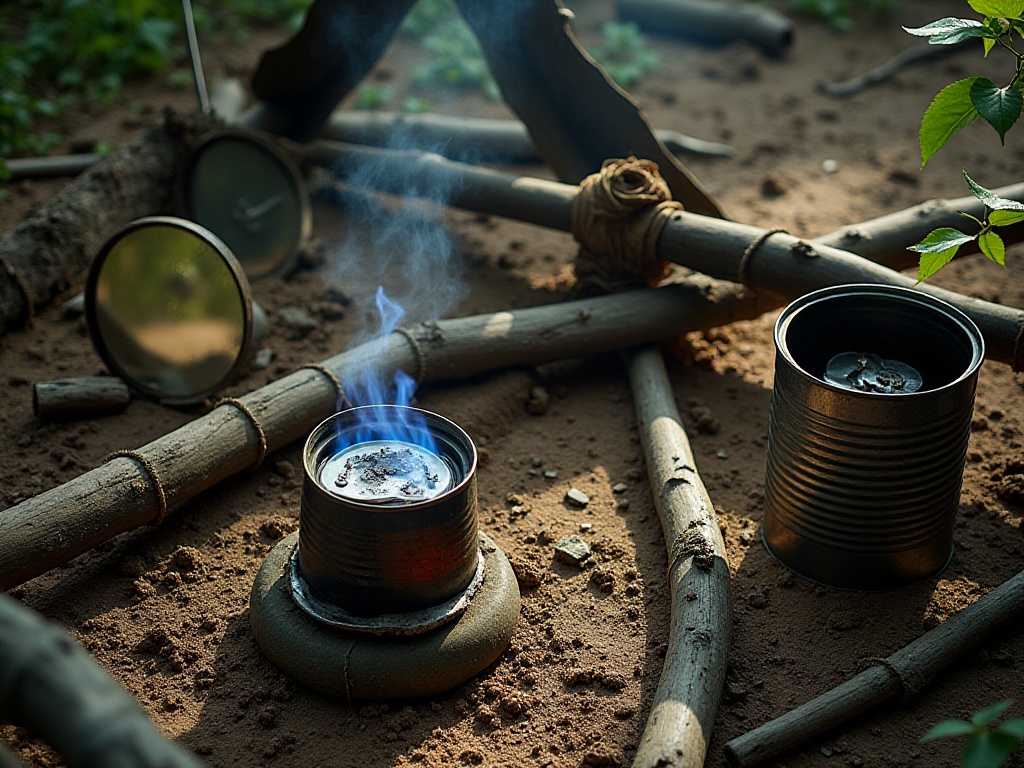
Building Shelter
Speaking of wilderness survival skills, the most basic and important is building shelter. Although most people bring tents when camping nowadays, knowing how to build temporary shelters is still very necessary. If your tent gets damaged or you need temporary refuge in special situations, these skills can come in handy.
Let me share a super practical building method. First, find two trees at an appropriate distance, ideally about 2-3 meters apart. Then find a sturdy branch slightly longer than the distance between the two trees. This branch will be the main beam of the entire shelter, and should be fixed between the two trees at about chest height.
Next is building the frame. Find some longer branches, support one end on the ground and lean the other end against the main beam at an angle, forming an A-frame structure. The spacing between these branches should be maintained at about 30-40 centimeters to ensure the overall structure's stability.
Once the frame is built, start filling it in. Use some thinner branches laid horizontally across the frame, then cover with leaves, pine needles, or other plants that can block wind and rain. Remember to layer from bottom to top, so rain water flows down the upper leaves rather than seeping into the shelter.
If you have a waterproof sheet or raincoat with you, even better. Laying these on the outermost layer not only provides better waterproofing but also prevents leaves from being blown away by wind. Finally, don't forget to lay some dry leaves or pine needles inside the shelter to insulate from ground moisture.
Distress Signals
Knowing how to send effective distress signals is also an important skill when encountering danger in the wilderness. The international distress signal is three consecutive signals, whether whistle blasts, light signals, or other forms of signaling, all follow this rule.
If you need help during daytime, the most effective method is using reflective items to send signals. Watch faces, mirrors, or even phone screens can be used to reflect sunlight for distress signals. When using these, make sure to aim the reflective surface toward the direction of aircraft or rescue personnel you see.
At night, fire signals are most effective. You can light three bonfires arranged in a triangle or straight line. If you only have one fire, you can also signal by blocking the firelight to send three light signals at intervals.
There's also a particularly useful trick of making simple whistles from plants. Find a relatively thick leaf, fold it in half and hold it between your thumbs, then blow hard to produce a sharp whistle sound. Although it might not be as loud as a real whistle, it's a good option in emergencies.
Equipment Use
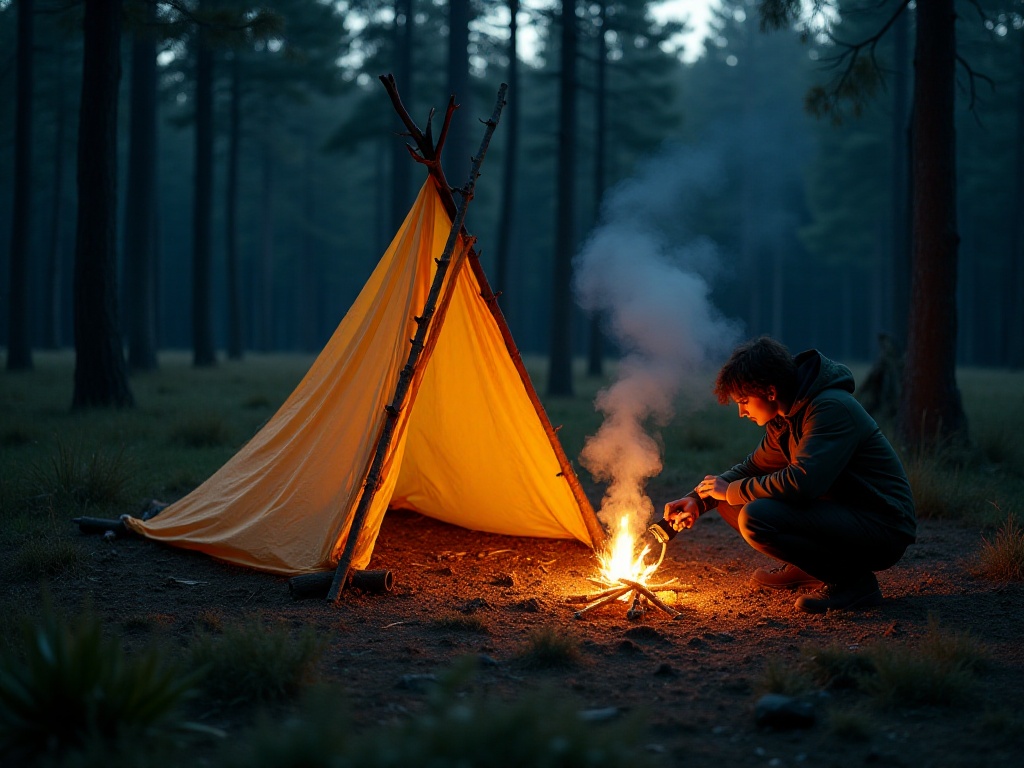
Tool Innovation
In the wilderness, you often encounter unexpected situations where innovative thinking is especially needed. Many ordinary items can become very useful after simple modifications.
For example, an ordinary can can be modified into a simple alcohol stove. The specific method is: first cut off the top of the can, drill a circle of small holes around the remaining part, then pour in alcohol to use for boiling water or cooking food. Of course, this method requires special attention to safety and must be used away from flammable materials.
Belts are also particularly useful tools. Besides holding up pants, they can be used to tie items, make simple stretchers, and even start fires. If the belt surface is smooth, it can be used to reflect sunlight for distress signals after being wiped clean.
Speaking of underwear, many might laugh, but it can really come in handy in emergencies. For example, pure cotton T-shirts can be used to filter muddy water and can be torn into strips for bandaging wounds. Synthetic underwear can be used as tinder since synthetic materials generally burn easily.
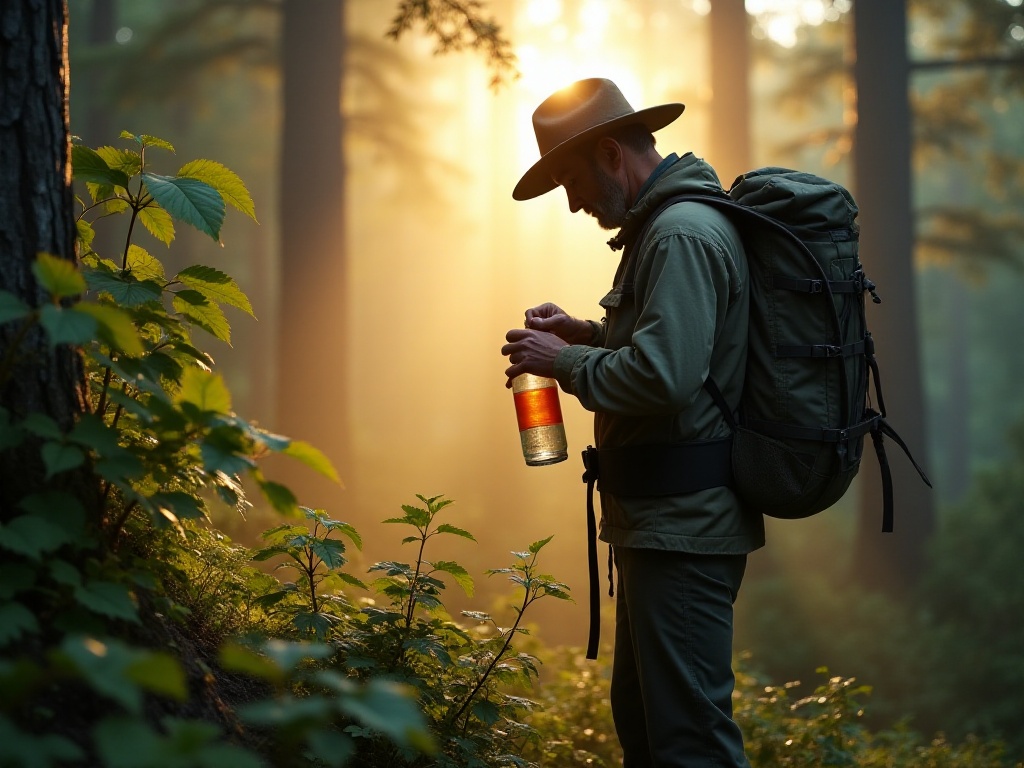
Critical Supplies
When it comes to wilderness survival, fire-starting tools are the most critical supplies. Besides conventional lighters and matches, there are actually many alternative solutions. For example, shoelaces can be used to make bow drill fire-starting devices. The specific method is: find a relatively straight branch as a spindle, then find a softer wooden board as a base. Dig a small groove in the base board, place one end of the spindle in the groove, then wrap the shoelace around the spindle and pull back and forth to make the spindle rotate quickly - the friction heat generated can ignite wood shavings.
Water and food reserves are also very important. When choosing food, prioritize high-energy foods that are easy to store, such as nuts, chocolate, and energy bars. These foods are not only easy to preserve but also high in calories, providing sufficient energy in emergencies.
A special reminder: never bring alcohol or caffeinated beverages. Although these drinks might make you feel energized, they actually worsen dehydration. In the wilderness, maintaining adequate hydration is most important.
Environmental Adaptation
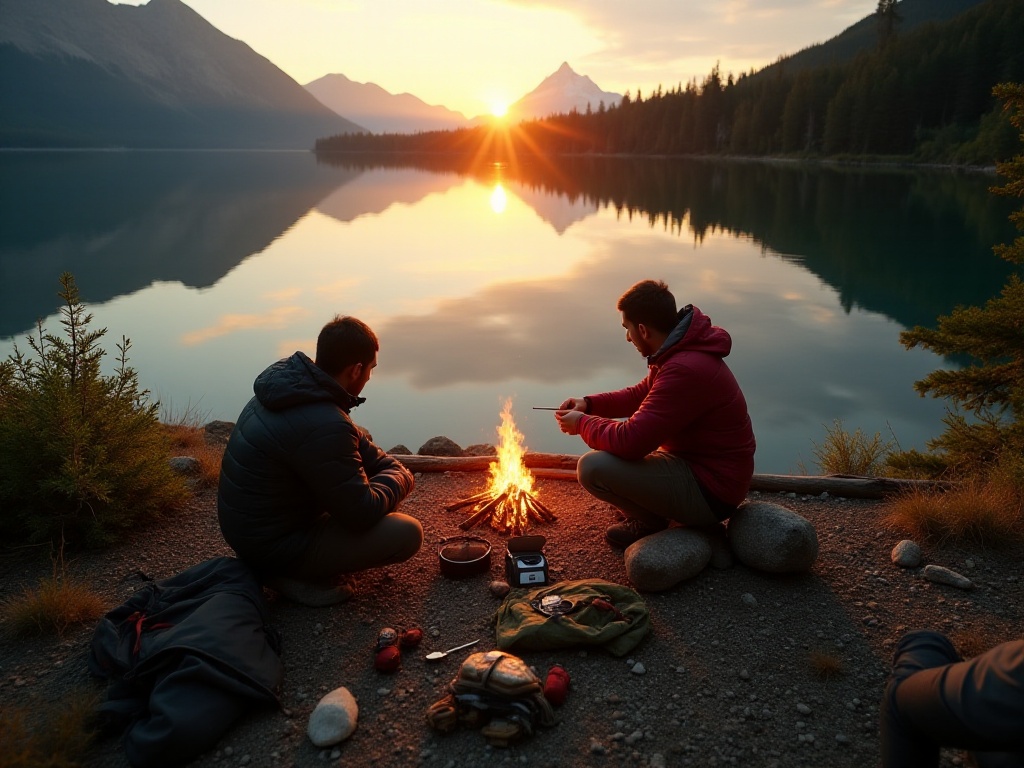
Dealing with Weather
Weather in the wilderness can be unpredictable, so clothing strategy is crucial. The most important principle is layering, so you can adjust according to weather changes. Generally, choose quick-drying underwear for the innermost layer, the middle layer is mainly for warmth, and the outer layer should focus on wind and water resistance.
Waterproofing your backpack is also very important. Even if the weather forecast says it's sunny, you should prepare for rain. I learned this lesson the hard way - setting out on a sunny day, only to be caught in a downpour halfway through that soaked all my equipment. Since then, I always pack important equipment in waterproof bags and add a rain cover to the outside of my backpack.
Understanding the Environment
Knowledge and understanding of the environment are important guarantees for wilderness survival. Plants in each region have their characteristics - some might be poisonous, while others could be good food sources. Taking North America as an example, there are three common poisonous plants to be especially aware of: poison oak, poison sumac, and poison ivy. These plants' leaves look ordinary, but contact can cause severe allergic skin reactions.
If you accidentally lose your compass, don't worry too much. You can determine direction by observing natural phenomena. For example, leaves usually grow toward the direction with most sunlight - in the Northern Hemisphere, this direction is generally south. Also, moss on tree trunks generally grows on the shadier, damper side, usually the north side in the Northern Hemisphere.
For marking trails, I recommend using charcoal. Charcoal is both environmentally friendly and visible, and won't pollute the environment like ribbons. You can mark trees with charcoal at key intersections or turns, making it easy to find your way back.
Conclusion
Through learning and practicing these wilderness survival skills, you'll surely be able to handle outdoor activities with ease. Remember, nature is both beautiful and dangerous - we need to use wisdom and thorough preparation to deal with these dangers. Everyone might have their unique wilderness survival experiences, welcome to share your stories in the comments!



